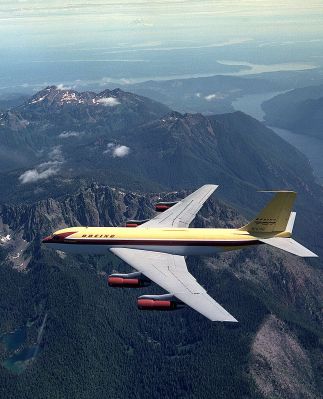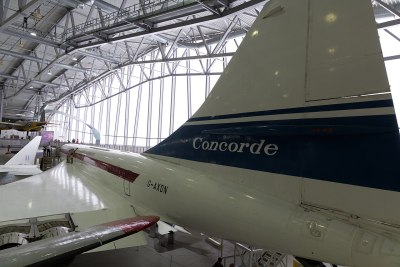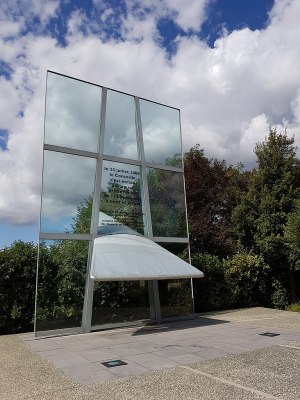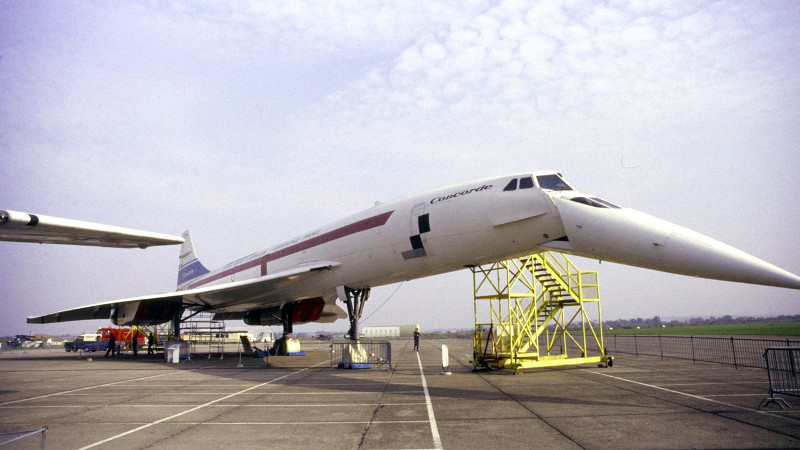Every nation has icons of national pride: a sports star, a space mission, or a piece of architecture. Usually they encapsulate a country’s spirit, so citizens can look up from their dreary lives and say “Now there‘s something I can take pride in!” Concorde, the supersonic airliner beloved by the late 20th century elite for their Atlantic crossings, was a genuine bona-fide British engineering icon.
But this icon is unique as symbols of national pride go, because we share it with the French. For every British Airways Concorde that plied the Atlantic from London, there was another doing the same from Paris, and for every British designed or built Concorde component there was another with a French pedigree. This unexpected international collaboration gave us the world’s most successful supersonic airliner, and given the political manoeuverings that surrounded its gestation, the fact that it made it to the skies at all is something of a minor miracle.
A Bright Future Of Supersonic Travel

In the 1950s, the direction of post-war aviation had been set by the first generation of four-engined jet passenger aircraft. Planes such as the De Haviland Comet, Tupolev TU-104, Sud Aviation Caravelle, and Boeing Dash-80 prototype are the visible ancestors of today’s airliners, but just as the future of jet fighter aircraft lay in supersonic designs it was envisaged that so too would the future of civil aviation.
By the 1980s, we would zip around the world at twice the speed of sound, and naturally the aircraft manufacturers of the day wanted a slice of that market. Governments and major manufacturers worldwide set their designers researching the feasibility of transforming design elements created for supersonic military aircraft into civilian airliners. By the end of the 1950s the French Sud Aviation and British BAC had advanced to the point of in 1960 investigating a joint venture, and were surprised to find that each other’s designs had arrived at a substantially similar shape and configuration.
A common design was agreed, and the respective governments contemplated a formal treaty. At this time, the British government was being blocked by the French from European Community membership, and was seeking anything that would sweeten their eventual membership. They thus pushed for a deal, and inserted punitive clauses for breaking it in the resulting 1962 treaty. The aircraft would be built as a cooperative effort between the two countries, with both governments funding the development in the expectation that they could get a head start over the Americans in equipping the airlines of the 1970s.
The Battle Of The Extra “E”
The aircraft that emerged had the familiar thin fuselage and long curved delta wing, and had four Rolls-Royce Olympus 593 turbojet engines derived from those used on the Avro Vulcan bomber mounted under the wings. For use at supersonic speeds, these engines had special intake ducts designed to slow the air down to subsonic speeds. And although they were fitted with afterburners for the climb to cruising altitude, these intakes gave the Concorde the ability to “supercruise”, or cruise at mach 2 supersonic speeds without afterburners engaged.

It is inevitable that such a project, at the edge of what is possible, will incur significant overruns. The Concorde was no exception. The first estimate of £70 million soared to a billion and beyond. That the project survived at all was due only to the expense of pulling out due to that punitive clause.
The sometimes testy relationship between the two countries’ political leadership was reflected in its name, variously being referred to with the French spelling of “Concorde” or the English “Concord”. The version with an “e” was finally adopted.
The two prototype aircraft made their maiden flights in 1969, with the French Concorde in Toulouse being the first. These two planes flew into a different environment from that envisaged in the 1950s. Concerns about noise and pollution, as well as the Oil Crisis in the early 1970s, led to much of the interest of the airlines in supersonic luxury travel melting away, and by the time the first production aircraft were under way only the two national airlines remained. The two governments were left having spent eye-watering sums to produce only a few aircraft, and opted to swallow the loss by passing them to the airlines. They were sold to the public as that source of national pride, and to this day that is how they are seen rather than as a colossal sinkhole of public money.
The Unthinkable Happens

Concorde’s use for special charter flights meant that it would often fly over parts of the UK outside of its normal scheduled routes, and even when it was a couple of decades old it would cause people to stop and watch it go by. “National icon” is a phrase that is sometimes used inappropriately, but for Brits and presumably the French too, it definitely applied to Concorde during those decades. It seemed to be a fixture without an end to its service.
But in July 2000, the aircraft suffered its first and only fatal crash. An Air France charter flight hit a piece of runway debris at Paris Charles de Gaulle airport, causing a fuel tank failure and fire that led to the aircraft crashing with the loss of all on board after only two minutes of flight.
The fleet was grounded while investigations were carried out and all aircraft were fitted with fuel tank modifications, but their return to the air was short-lived. In 2003 the entire fleet was retired by both airlines, causing a brief controversy. Civilian supersonic airline flight had not become travel for the masses as was once predicted, and while still a source of national pride, the aircraft had become something of an anachronism. Meanwhile we’re left to queue for our twin-engined subsonic widebody aircraft flights, and hope that one day Reaction Engines might rekindle the dream.
Header images: foundin_a_attic, CC BY 2.0, and Arpingstone, Public domain.
















If you have nothing better to do with around 9 hours of your life, and want to know more, then this is an interesting read:
https://www.pprune.org/tech-log/423988-concorde-question.html
The rule is, you can’t ask another question on that thread until you have read, and understood, the whole thing.
Amazing and really awesome that the Dash-80 developed into still in-service aircraft that have been through a lot of intense flights and are still slated to be in operation for future roles for the next decade and beyond easy.
We’re still flying the Beavers up here, that developed into the Otter, then the Twin Otter (400 series still in production) that developed into the Dash 7 and that developed into the Dash 8 which is in production. And pretty much any of that lot with hours left on it is still in service, if not completely refurbished and given upgrades and turboprops it didn’t have in the first place.
A few months back I watched a documentary on the Beaver… looks more like almost a year ago. Really neat history with the de Havilland’s.
https://www.youtube.com/watch?v=b2hZe9ToaEI
Thanks Jenny, all round a technical marvel. In the 60s my father worked on the development of the flight recorders and I remember as a 10 year old seeing it at the Farnborough air show, and as a real treat being shown the flight deck, sitting in one of the seats, and being amazed at the cramped cabin and then later seeing it fly with the unbelievable noise. Also saw the I’ll fated Russian version a couple of years later.
I also recall in the early 80s while sailing between Cherbourg and Poole having the fright of my life when there were two massive booms. Turns out Concorde did that sometimes over the English Channel.
That so takes me back…. I almost had a run-in with 202 one morning on my way in to work when the notoriously unreliable BAC Filton taxiway traffic light failed yet once again and I rounded a bend to find it being refueled and blocking the path to our research labs in the old 501 squadron area . Brit damages Anglo-French aircraft in French built automobile would have been an insurance claim that certainly completed the circle.
I spent a year at Fort Monmouth, New Jersey, in the mid-1980s, and saw the Concorde on approach to NY a few times. It didn’t matter what was going on, when the Concorde came over, everything stopped and we all just stood slack jawed and watched it pass.
Concorde was not an american plane so they pretty quick figured out they could ban it from going supersonic above american soil with the excuse of “noise problems”. That pretty much sealed it’s fate from the beginning to some niche applications over oceans.
The plane itself is (was) an interesting piece of technology, but at the same time a ridiculous toy for the ritch.
It was not allowed to go supersonic over the UK either, I think many countries restrict supersonic flight over their air zones. Don’t think it mattered who built it. For the UK even military aircraft have to have special clearance used only when jets are scrambled for an emergency. Hear/felt one a couple of weeks back when some Typhoons were scrambled to intercept a private jet that wasn’t responding to air traffic control.
The Brits have made some truly beautiful planes but they also have the knack of designing engines that sound stunning as well. I remember standing on Plymouth Hoe watching – and then feeling – a group of four Vulcans come in over the sea. It’s an experience that I don’t think we could ever forget – the howl of the Olympus engines as the Vulcans disappeared almost vertically into the sky. I’m very much hoping that the Reaction Engines Sabre development will fly before too much longer. If ever there was a world class system for getting into space without the drama it’s this.
In the late 70s I was in the next plane to take off at Heathrow on several occasions. It was the only aircraft that could be heard inside the cabin of another (in my experience). But always a beautiful sight.
I use to live on Long Island, on the days I had the late shift, I’d see a Concord(e?) pass overhead as I drove to work.
Guess the concept of the Concord(e) was incorrect, people wanted cheaper transport not faster, which I guess is the same reason Bugatti doesn’t make 200 mph passenger buses.
There were a nice 1979 movie about Concord Disaster
https://www.youtube.com/watch?v=B3ac9ve_2hk
Okayyyyyy, how do you end up in the Alps trying to fly from Paris to Moscow?
I started watching a sci-fri movie a couple of weeks ago on Roku.
A comet had veered suddenly and was now heading to Mars, the Space Agency (thankfully NASA did not allow them to use their name) had real time communication with Mars rovers. They changed the rovers’ cameras to watch the incoming comet and the following impact which destroyed the rovers.
Real time response and video from Mars, Yeeeeeaaaaaaaah, rrrrrrrrright!
I decided to do something besides watching television.
Very carefully…or not.
As a child, I lived near Filton from where the British test planes flew. I remember hearing the boom and watching them fly overhead but the loudest sound was many years later when I was driving past the end of a runway at Heathrow just as a Concorde was taking off. It was the loudest thing I have ever heard. The Concorde wouldn’t come close to current noise standards, never mind sonic booms. Great technology but the need to fly long distances quickly has become less and less important as communications technology has improved.
I got to see the Concorde when it first came to Australia in June 1972. The classes at our primary school were allowed outside to see it as it flew around Sydney and we all marvelled and cheered at it.
Shame it never really took off here (no pun intended) as the UK to Oz trip would have been a great use of its ability to reduce intercontinental travel time. As I read articles about that demo trip, apparently it had to refuel twice for the journey… this would have been a huge cost.
“ even when it was a couple of decades old it would cause people to stop and watch it go by”
Mainly because it was so bladed loud you had to stop what you were doing. The joys of growing up under the flight path.
Engineering marvel it was, but I’m not sad it stopped flying. It’s a classic example of a public sector project which throws good money after bad in the pursuit of a ill-planned and dubious goal.
And if it had never been built, the desire for trans-Atlantic meetings might have given us video conferencing long ago.
“Concorde [had] the ability to “supercruise”, or cruise at mach 2 supersonic speeds without afterburners engaged”
This was the real trick. Even today, very few aircraft can manage this, and I don’t think any of them have the same range as Concorde. Hence the famous “only picture of a Concorde at mach 2”, taken from an RAF Tornado, which had to time it’s interception as it could only reach that speed for a few minutes.
Allegedly this unprecedented speed and range, led to individual BA and AF pilots getting more supersonic flying hours per year than the entire USAF.
Pretty much the last thing I did before lockdown last year, was go visit Concorde 216 up at Filton, so this is making me a bit weepy right now.
I think the clue to that is the intake design as we see quotes like “60% of the thrust is made by the intake” at supercruise speeds. Hence afterburner was only used to punch through transonic region, whereas Tu-144 and other projects needed to run on afterburner while supersonic.
However, this was extremely tuned for altitude, temperature and air density, such that mid Atlantic it would be up and down a few thousand feet chasing the most favorable air. Hence I guess why it was not built into that Tornado the same way, maintaining a somewhat steady altitude makes you missile bait, they needed to go supersonic at any altitude and not worry about it. I presume it was the fuel gushing into the afterburners at barrels a minute that limited the Tornado’s hang around at mach 2 time.
Ah so apparently the real story of the Tornado’s intake is much more amusing/depressing. The prototype did supercruise, it did supercruise so well that it got stuck at supercruise, due to a system that kept up the idle speed of the engine such that it ended up too fast… Test pilot had to do some esses to scrub enough speed to drop below supersonic and regain throttle control LOL…
Anyway, so the division of responsibility in the consortium had the Germans handling the intakes, and redesign to avoid the above problem required, they couldn’t manage it, so UK sent Concorde data and Concorde experts… annnnd the Germans tried to patent the design… muchos legal, political and technical kerfuffle later, the Concorde tech didn’t get into the Tornado.
Well done, you’ve turned a nice piece about European aviation history into something political. You must be very pleased with yourself.
I visited the Air and Space Museum in Paris in 2017. They have a production Concorde lined up with an engineering prototype, and it was utterly fascinating to see. Walking through them… I know another reason they had for failure: the ceiling is so low that you have to tip your head when you’re my height (185 cm / 6 ft 1 in), you’re practically bumping both the left and right armrests while you’re in the aisle, there’s no overhead storage… it’s hilariously cramped. The prospect of paying a huge pile of extra money to be in the least comfortable airliner I’ve ever experienced is just amusing.
Supersonic flight is awesome, don’t get me wrong. But I don’t think there are that many people willing to spend 30x the price of an economy ticket to get from JFK to Heathrow in 3 hours jammed in a cigar tube, instead of 7 hours in luxury in a 787.
You are comparing a 2020 aircraft with a 1960 one, it’s like comparing apples to tomatoes. From what I am aware of, there was more room for legs in the Concorde than in most aircrafts at the time. In Paris CDG there was a dedicated service for Concorde passengers that outstanded the Air France 1st class service. In flight food was great (at least with Air France). As of today I’d rather spend 3 hours in a Concorde than 7 in an A350 or B787 (money aside of course).
About the price tho… it’s a good point: it was filling a niche market. But you could do the round trip from London/Paris to NYC on the same day. You get up in Paris, go for a meeting in NYC, and are back for dinner in Europe. Of course it may sound stupid for us now because of Skype/Teams/Facetime etc… But back in the day they didn’t have this.
Concorde was the best plane ever and i hate America for going all elitist about it when ONE of them crashed, but when a Boeing falls out of the sky its supposed to be different & acceptable? boo!
(Can you tell im from Europe? lol)
Braniff international Airways rented Concordes for a year for one of their US routes. Their crews would fly just barely under supersonic. But despite offering tickets for exactly the same price as their regular planes they didn’t sell out a single Concorde flight. Had is been a consistent sellout, Braniff would have purchased outright some of the planes.